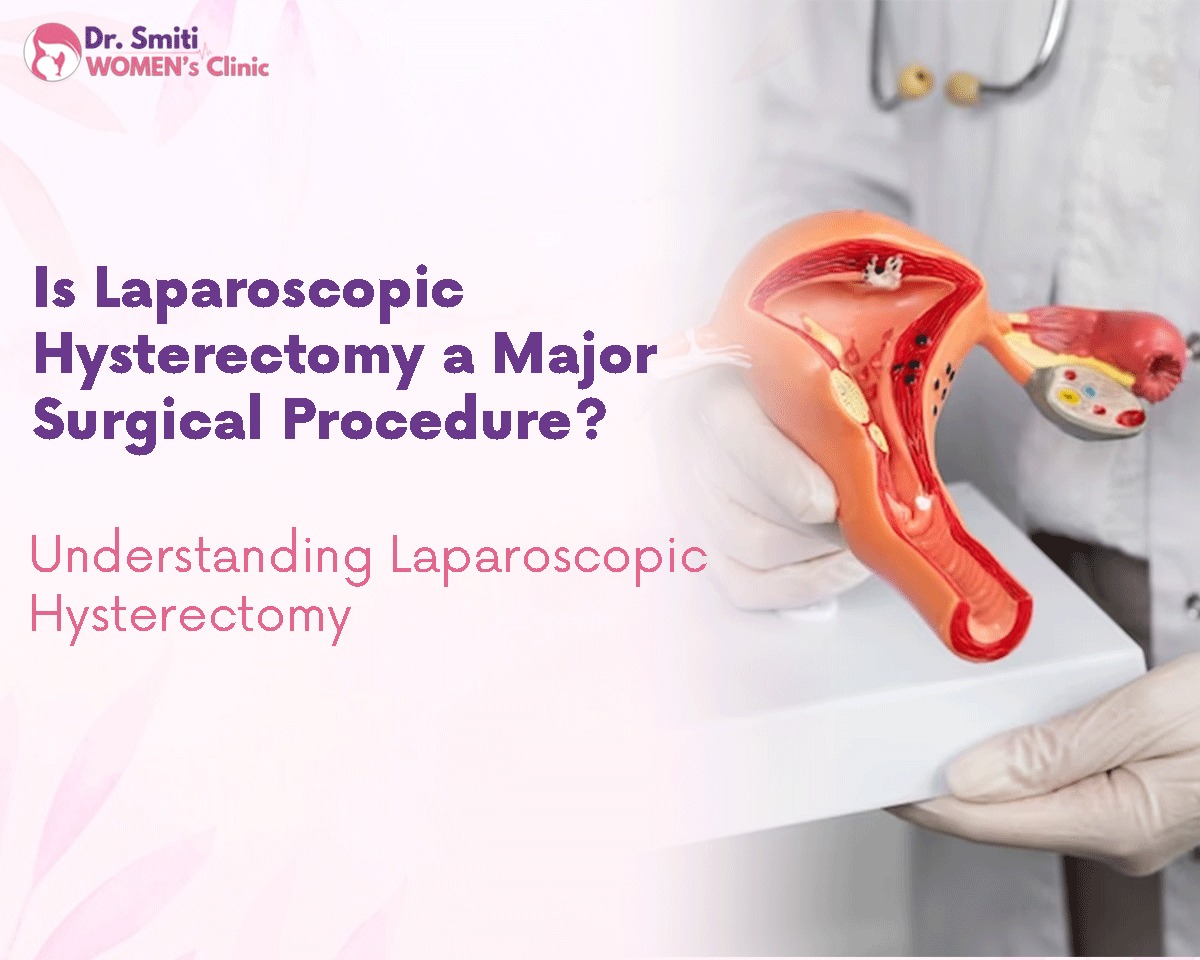Understanding Laparoscopic Hysterectomy
Hysterectomy, the surgical removal of the uterus, is a well-known gynecological procedure that has provided relief for countless women dealing with various medical conditions. Historically, hysterectomies involved open surgery, which meant a significant abdominal incision. However, modern medical advances have introduced minimally invasive techniques, including laparoscopic hysterectomy, which has sparked debate regarding its classification as a major surgical procedure. In this blog, we aim to clarify the nature of laparoscopic hysterectomy and dispel misconceptions about its categorization as a major surgery.
- Laparoscopic Hysterectomy:
A Less Invasive Option for Uterus Removal
An Introduction to Laparoscopic Hysterectomy: Laparoscopic hysterectomy is a surgical procedure that aims to remove the uterus with minimal invasiveness. This procedure entails making small incisions in the abdominal region to access and remove the uterus using specialized instruments and a laparoscope, which is a camera-equipped device.
2. Defining Major Surgery
Understanding Major Surgery: Major surgeries are typically characterized by invasive procedures associated with significant risks, lengthy hospitalization, and extended recovery periods. These operations often entail substantial incisions, considerable blood loss, and potential complications.
3. Dispelling the Myth: Laparoscopic Hysterectomy
Laparoscopic Hysterectomy Is Minimally Invasive: Contrary to the misconception, laparoscopic hysterectomy is classified as a minimally invasive surgical procedure rather than a major one.
Here’s why:
- Small Incisions: Laparoscopic hysterectomy is characterized by the creation of small incisions (usually measuring 0.5 to 1.5 centimetres) in the abdominal area. These incisions are significantly smaller than the substantial abdominal incisions required in traditional open hysterectomy procedures.
- Reduced Hospitalization Duration: Patients who undergo laparoscopic hysterectomy generally have shorter hospital stays when compared to those who choose open surgery. In some instances, women may even undergo this procedure as outpatients and return home on the same day.
- Quicker Recovery: The recovery period associated with laparoscopic hysterectomy is generally shorter than that of open surgery. Patients often report experiencing less pain, minimal scarring, and a quicker return to their daily routines.
- Reduced Blood Loss: Laparoscopic hysterectomy is linked to reduced blood loss in comparison to open surgery, thus diminishing the necessity for blood transfusions.
- Lower Risk of Complications: While no surgical procedure is entirely devoid of risk, laparoscopic hysterectomy carries a lower risk of specific complications that are more commonly associated with extensive incisions, such as wound infections and incisional hernias.
4. Indications for Laparoscopic Hysterectomy
Laparoscopic hysterectomy may be recommended for an array of gynecological conditions, including:
- Uterine Fibroids: Removal of fibroids responsible for pain, abnormal bleeding, or other distressing symptoms.
- Endometriosis: Addressing endometriosis, a condition marked by the growth of tissue similar to the uterine lining outside the uterus.
- Uterine Prolapse: Rectifying uterine prolapse, a condition where the uterus shifts downward into the vaginal canal, in medical terminology.”
- Abnormal Uterine Bleeding: Handling abnormal uterine bleeding that remains unresponsive to alternative treatments.
Conclusion:
In summary, laparoscopic hysterectomy is correctly classified as a minimally invasive procedure, not a major surgical operation. Despite involving the removal of the uterus, this approach is marked by small incisions, reduced hospitalization, and a speedier recuperation process compared to the traditional open surgery method. These advantages make laparoscopic hysterectomy a preferred choice for addressing a variety of gynecological concerns. It remains crucial for women contemplating a hysterectomy to engage in discussions with their healthcare providers to determine the most suitable approach based on their unique medical requirements and individual circumstances.







